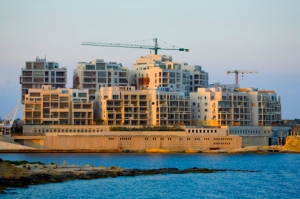Having over 70,000 vacant residential properties is a very serious matter which both the Nationalist and the Labour parties have ignored in their electoral manifestos. Rather than being ignored this fact ought to serve as the launching pad for a different way of looking at land use planning issues.
The Housing Authority in the past months has opted not to build new social housing units but instead decided to tap the stock of vacant dwellings held by the private sector. It was a very positive decision pushed forward by Minister Chris Said on taking up his Ministerial responsibilities early in 2012.
In its electoral manifesto Alternattiva Demokratika has listed a number of specific proposals which would go a long way to address the land use planning chaos which will be inherited by the government that takes office after the 9 March general elections.
As a first step Malta requires a moratorium on large scale residential development. The building industry cannot keep constructing flats and maisonettes in hundreds, adding to the stock of vacant dwellings. The number of vacant residential properties is equivalent to 9 times the size of the residential parts of B’Kara.
While the Malta Environment and Planning Authority has issued development permits, the State has, through our taxes, been paying up for the development of the infrastructure (roads, public sewer, water and electricity distribution networks………) which is underutilised. These funds could have been put to better use than to service vacant dwellings.
The boundaries of the development zone have to be rolled back. Those lands which, in August 2006, were included as land suitable for development as part of the so-called rationalisation exercise and have not yet been committed to development should return forthwith outside the development zone where they belong.
The construction industry, aided by a myopic MEPA, has made a havoc of our towns and villages through encouraging overdevelopment. In 2006, when the final decisions on most of the Local Plans were being considered, the Government had access to the 2005 census results which determined the existence of 53,136 vacant dwellings. This was a substantial increase over the 17,413 vacant dwellings identified 10 years earlier as part of the 1995 census.
Publication of the 2011 census results on property is long overdue, but it is expected that the numbers this time will exceed the 70,000 mark substantially.
Faced with these numbers, a responsible government would never have proposed extending the development zones. The 2005 census result provided the evidence for their curtailment not for their extension. In addition to extending the development zones, the PN-led government increased the permissible building heights practically all over Malta, the end result being a further substantial increase in the number of vacant dwellings.
In addition, the height relaxation policy put in place in 2006 had another serious impact. It placed a number of dwellings in the shade of new buildings surrounding them, these being built in line with the new permissible heights. As a result, the residents in these dwellings cannot make use of solar energy. Not only the use of photovoltaic panels is out of the question but also their solar water heaters are in most cases no longer of any use!
Faced with this situation, it is political madness to propose considering the construction industry as an important and fundamental component of the economy, as the PL is proposing. The construction industry must shrink rather than expand. It must be assisted to manage its essential and unavoidable restructuring.
The construction industry can be directed towards three specific areas of activity: rehabilitation of old properties, road construction/maintenance and marine construction works. Each of these three areas of activity requires training in construction skills. Rehabilitation works require old building trades on the verge of disappearance. Roadworks, though improving in quality, still require a more skilled labourforce. We also need to take stock of our marine infrastructure which requires substantial improvement as well as regular maintenance.
The Government can assist the construction industry to change through providing training facilties for its labour force, thereby reducing the social impacts of change. Funds from the European Social Fund are available to assist in this exercise.
Land use planning should be subject to environmental governance rules. It is for this reason that AD considers it essential that rather then splitting up MEPA, the Government should go for a defragmentation, consolidating all environmental functions in one authority through the amalgamation of MEPA with the Resources Authority.
In such a consolidated authority, environmental considerations should be overriding and, in particular, land use planning should be put in its proper place: under the continuous supervision of a properly staffed Environment Directorate.
This is the basic change required in environmental governance. Placing the land use planning and the construction industry in their proper place and ensuring that environmental governance is defragmented.
published in The Times, Saturday 23rd February 2013

